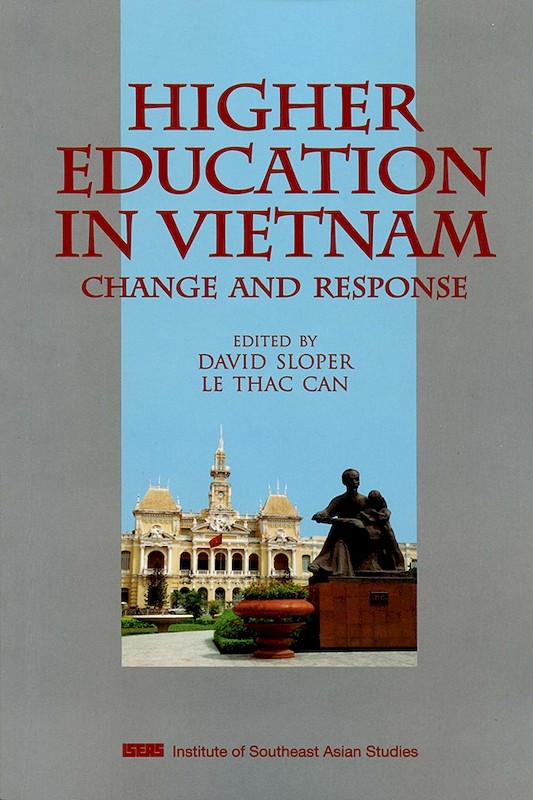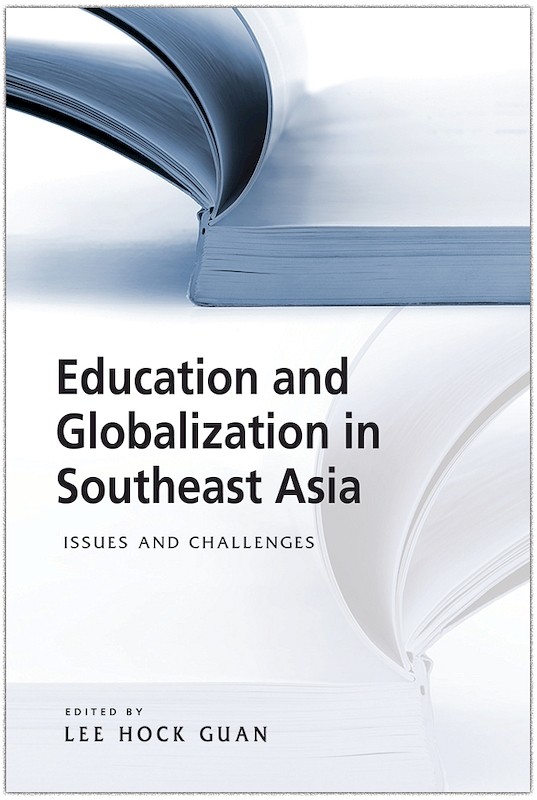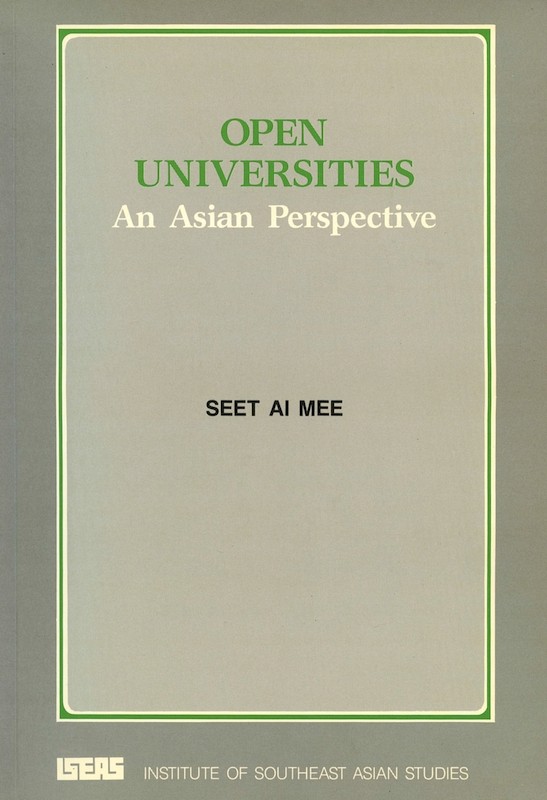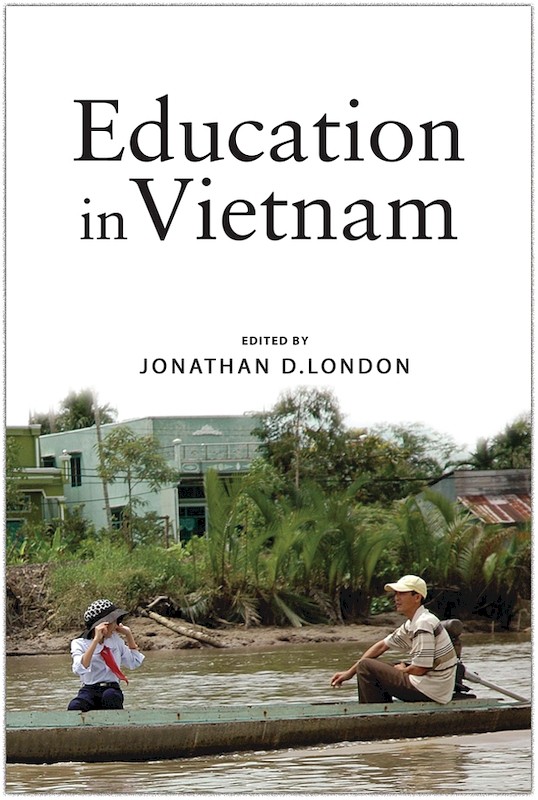Education in Indonesia
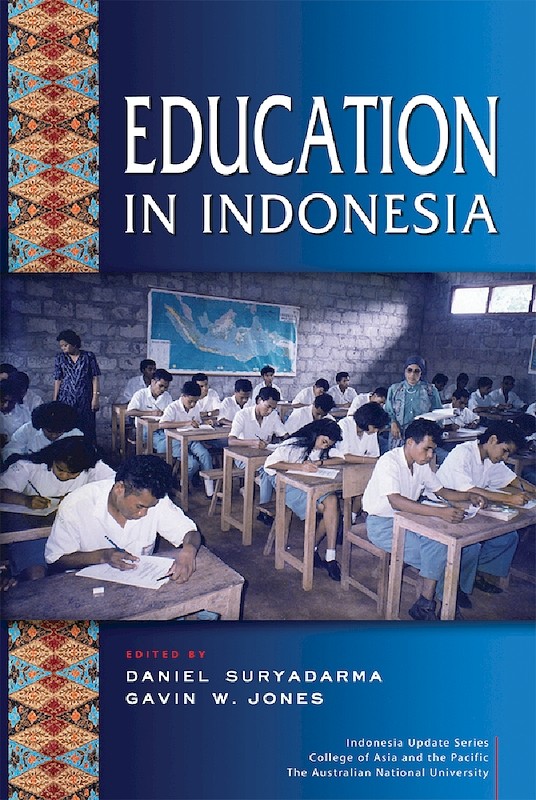
Date of publication:
2013
Publisher:
Institute of Southeast Asian Studies
Number of pages:
280
Code:
BM485
Reviews
"Education in Indonesia critically looks at the country's education sector, which has not received much attention by international observers amid the advancement of the country's economy as Indonesia, the world's most populous Muslim country, also becomes the third largest democracy after India and the United States. The book analyzes the changes and identifies challenges for future improvement, drawing on the expertise of some of the most knowledgeable people in the field. It provides a detailed and well-researched analysis of Indonesia's current education development. It sends a strong message that unless Indonesia seriously reforms this sector, the country will not be able to catch up with the ever increasing demand for an educated workforce. Investment in education, along with its infrastructure, is vital for the country to sustain its burgeoning economy and to avoid being caught in what economists call a 'middle-income trap'. Countries suffering in a middle income gap can't compete with advanced economies in high-skill innovations and manufacturing, nor with low income, low wage economies in cheap production. The ministry of education should be aware that the coming '2045 golden generation', when Indonesia's productive aged population is the biggest in Southeast Asia, may not live up to expectations if much more comprehensive initiatives in improving education are not undertaken now. And other clouds are on the horizon. Standard & Poor's (S&P) has recently downgraded the outlook for Indonesia's economy from 'positive' to 'stable' amid the gloomy global economic situation" (Bijdragen tot de Taal-, Land- en Volkenkunde).
"This book provides the reader with a very reasonable and balanced picture of the state of the Indonesian education sector and its many problems....The book speaks to many of the more recent developments in the sector, draws on an impressive group of knowledgeable contributors, and contains a good blend of descriptive information and analysis. Its commentary is thoughtful and its recommendations often insightful. The descriptive material and the consideration given to many of the challenges faced by Indonesia make this collection particularly valuable. Part of the book's value is that it draws the less-informed reader into considering much more than the four most commonly known areas of basic education (access, quality, decentralisation, and school management). What is clear is that .. many other matters discussed in the book are exactly those of education policy and practice that appear now to be of most interest to the public and to policymakers. Since the publication of the book, the media have successfully drawn national attention to Indonesia's poor results in international standardised tests, in particular the OECD's 2012 Programme for International Student Assessment; the potential benefits and difficulties of implementing the new 2013 curriculum; the troubling features of the national examination; and the low skill levels of graduates from secondary schools and universities. This illustrates the timeliness of both the ANU conference and this book. A final point to note that speaks well of this volume and its contribution to the recent literature on Indonesian education: many of my colleagues and counterparts have read all or most of these papers, and most have commented on the book's usefulness both as a reference point for the current state of Indonesian education, and, perhaps more important, as a guide to the magnitude and character of the task ahead. They are a critical lot, so praise indeed" (Bulletin of Indonesian Economic Studies).
"This book provides the reader with a very reasonable and balanced picture of the state of the Indonesian education sector and its many problems....The book speaks to many of the more recent developments in the sector, draws on an impressive group of knowledgeable contributors, and contains a good blend of descriptive information and analysis. Its commentary is thoughtful and its recommendations often insightful. The descriptive material and the consideration given to many of the challenges faced by Indonesia make this collection particularly valuable. Part of the book's value is that it draws the less-informed reader into considering much more than the four most commonly known areas of basic education (access, quality, decentralisation, and school management). What is clear is that .. many other matters discussed in the book are exactly those of education policy and practice that appear now to be of most interest to the public and to policymakers. Since the publication of the book, the media have successfully drawn national attention to Indonesia's poor results in international standardised tests, in particular the OECD's 2012 Programme for International Student Assessment; the potential benefits and difficulties of implementing the new 2013 curriculum; the troubling features of the national examination; and the low skill levels of graduates from secondary schools and universities. This illustrates the timeliness of both the ANU conference and this book. A final point to note that speaks well of this volume and its contribution to the recent literature on Indonesian education: many of my colleagues and counterparts have read all or most of these papers, and most have commented on the book's usefulness both as a reference point for the current state of Indonesian education, and, perhaps more important, as a guide to the magnitude and character of the task ahead. They are a critical lot, so praise indeed" (Bulletin of Indonesian Economic Studies).
About the publication
In Indonesia, as elsewhere in Asia, education will inevitably play a key role in the national development experience as the twenty-first century unfolds. Not much international attention is paid to how the education sector is faring in Indonesia, but that is not because nothing is happening. The past decade has seen major changes in the structure of the education system and in the schooling trajectories of Indonesian children and adolescents. The administration of primary and secondary education has been decentralized to the regions. A new paradigm of school-based management has been introduced. Public spending on education has finally reached one-fifth of total government spending, as required by law. But although enrolment rates at all levels continue to increase, the quality of education remains low and has not improved, and the tertiary sector continues to experience problems of autonomy and unsatisfactory performance.
This book delves into the major developments in education in Indonesia. Drawing on the expertise of some of the most knowledgeable people in the field, it identifies the challenges facing the sector and offers recommendations on how these challenges could be overcome.
This book delves into the major developments in education in Indonesia. Drawing on the expertise of some of the most knowledgeable people in the field, it identifies the challenges facing the sector and offers recommendations on how these challenges could be overcome.
Contents
-
Education in Indonesia
[Whole Publication, ISBN: 9789814459877] -
Preliminary pages
-
1. Meeting the Education Challenge, by Daniel Suryadarma, Gavin W Jones, authors
-
2. Trends in Education in Indonesia, by Suharti, author
-
3. Teacher Training, School Norms and Teacher Effectiveness in Indonesia, by Christopher Bjork, author
-
4. Integrating Islamic Schools into the Indonesian National Education System: A Case of Architecture over Implementation?, by Robert Kingham, Jemma Parsons, authors
-
5. Early Childhood Education and Development Services in Indonesia, by Hafid Alatas, Sally Brinkman, Mae Chu Chang, Titie Hadiyati, Djoko Hartono, Amer Hasan, Marilou Hyson, Haeil Jung, Angela Kinnell, Menno Pradhan, Rosfita Roesli, authors
-
6. Where Did All the Money Go? Financing Basic Education in Indonesia, by Samer Al-Samarrai, Pedro Cerdan-Infantes, authors
-
7. An Assessment of Policies to Improve Teacher Quality and Reduce Teacher Absenteeism, by Asep Suryahadi, Prio Sambodho, authors
-
8. Indonesian Universities: Rapid Growth, Major Challenges, by Hal Hill, Thee Kian Wee, authors
-
9. Beating the Odds: Locally Relevant Alternatives to World-class Universities, by Rivandra Royono, Diastika Rahwidiati, authors
-
10. Financing Higher Education: The Viability of a Commercial Student Loan Scheme in Indonesia, by Bruce Chapman, Daniel Suryadarma, authors
-
11. The Transformation and Internationalization of Higher Education: The Malaysian Experience, by Khong Kim Hoong, author
-
12. Role of the Education and Training Sector in Addressing Skill Mismatch in Indonesia, by Emanuela di Gropello, author
-
Index
-
List of Indonesia Update Series
Indonesia Update Series
-
2012Indonesia Rising: The Repositioning of Asia's Third GiantAnthony Reid, editor
-
2011Employment, Living Standards and Poverty in Contemporary Indonesia
-
2010Problems of Democratisation in Indonesia: Elections, Institutions and Society
-
2009Indonesia beyond the Water's Edge: Managing an Archipelagic State
-
2008Expressing Islam: Religious Life and Politics in Indonesia
-
2007Indonesia: Democracy and the Promise of Good Governance
-
2006Different Societies, Shared Futures: Australia, Indonesia and the RegionJohn Monfries, editor
-
2005The Politics and Economics of Indonesia's Natural ResourcesBudy Resosudarmo, editor
-
2004Business in Indonesia: New Challenges, Old Problems
-
2003Local Power and Politics in Indonesia: Decentralisation & Democratisation
-
2002Women in Indonesia: Gender, Equity and Development
-
2001Indonesia Today: Challenges of History
-
2000Indonesia in Transition: Social Aspects of Reformasi and Crisis
-
1999Post-Soeharto Indonesia: Renewal or Chaos?Geoff Forrester, editor
-
1997Indonesia Assessment: Population and Human Resources
-
1994Indonesia Assessment 1994: Finance as a Key Sector in Indonesia's DevelopmentRoss H McLeod, editor


